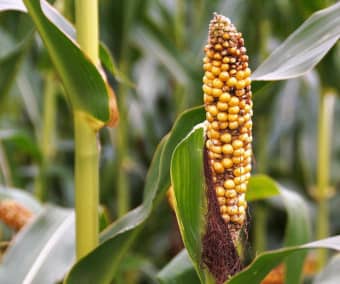Table of Contents
Introduction
In writing your thesis, one of the first terms that you encounter is the word variable. Failure to understand the meaning and the usefulness of variables in your study will prevent you from doing excellent research. What are variables, and how do you use variables in your research?
I explain this key research concept below with lots of examples of variables commonly used in a study.
You may find it challenging to understand just what variables are in research, especially those that deal with quantitative data analysis. This initial difficulty about variables becomes much more confusing when you encounter the phrases “dependent variable” and “independent variable” as you go deeper in studying this vital concept of research, as well as statistics.
Understanding what variables mean is crucial in writing your thesis proposal because you will need these in constructing your conceptual framework and in analyzing the data that you have gathered.
Therefore, it is a must that you should be able to grasp thoroughly the meaning of variables and ways on how to measure them. Yes, the variables should be measurable so that you will use your data for statistical analysis.
I will strengthen your understanding by providing examples of phenomena and their corresponding variables below.
Definition of Variable
Variables are those simplified portions of the complex phenomena that you intend to study. The word variable is derived from the root word “vary,” meaning, changing in amount, volume, number, form, nature, or type. These variables should be measurable, i.e., they can be counted or subjected to a scale.
The next section provides examples of variables related to climate change, academic performance, crime, fish kill, crop growth, and how content goes viral. Note that the variables in these phenomena can be measured, except the last one, where a bit more work is required.
Examples of Variables in Research: 6 Phenomena
The following are examples of phenomena from a global to a local perspective. The corresponding list of variables is given to illustrate how complex phenomena can be broken down into manageable pieces for better understanding and to subject the phenomena to research.
Phenomenon 1: Climate change
Examples of variables related to climate change:
- sea level
- temperature
- the amount of carbon emission
- the amount of rainfall
Phenomenon 2: Crime and violence in the streets
Examples of variables related to crime and violence:
- number of robberies
- number of attempted murders
- number of prisoners
- number of crime victims
- number of laws enforcers
- number of convictions
- number of carnapping incidents
Phenomenon 3: Poor performance of students in college entrance exams
Examples of variables related to poor academic performance:
- entrance exam score
- number of hours devoted to studying
- student-teacher ratio
- number of students in the class
- educational attainment of teachers
- teaching style
- the distance of school from home
- number of hours devoted by parents in providing tutorial support
Phenomenon 4: Fish kill
Examples of variables related to fish kill:
- dissolved oxygen
- water salinity
- temperature
- age of fish
- presence or absence of parasites
- presence or absence of heavy metal
- stocking density
Phenomenon 5: Poor crop growth
Examples of variables related to poor crop growth:
- the amount of nitrogen in the soil
- the amount of phosphorous in the soil
- the amount of potassium in the ground
- the amount of rainfall
- frequency of weeding
- type of soil
- temperature

Phenomenon 6: How Content Goes Viral
- positive,
- interesting,
- prominent,
- useful,
- surprising, and
- causing physiological arousal.
Notice in the above variable examples that all the factors listed under the phenomena can be counted or measured using an ordinal, ratio, or interval scale, except for the last one. The factors that influence how content goes viral are essentially subjective.
But researchers devised ways to measure those variables by grouping the respondents’ answers on whether content is positive, interesting, prominent, among others (see the full description here).
Thus, the variables in the last phenomenon represent the nominal scale of measuring variables.
The expected values derived from these variables will be in terms of numbers, amount, category, or type. Quantified variables allow statistical analysis. Variable descriptions, correlations, or differences are then determined.
Difference Between Independent and Dependent Variables
Which of the above examples of variables are the independent and the dependent variables?
Independent Variables
The independent variables are those variables that may influence or affect the other variable, i.e., the dependent variable.
For example, in the second phenomenon, i.e., crime and violence in the streets, the independent variables are the number of law enforcers. If there are more law enforcers, it is expected that it will reduce the following:
- number of robberies,
- number of attempted murders,
- number of prisoners,
- number of crime victims, and
- the number of carnapping incidents.
The five variables listed under crime and violence in the streets as the theme of a study are all dependent variables.
Dependent Variables
The dependent variable, as previously mentioned, is the variable affected or influenced by the independent variable.
For example, in the first phenomenon on climate change, temperature as the independent variable influences sea level rise, the dependent variable. Increased temperature will cause the expansion of water in the sea. Thus, sea-level rise on a global scale will occur.
I will leave the classification of the other variables to you. Find out whether those are independent or dependent variables. Note, however, that some variables can be both independent or dependent variables, as the context of the study dictates.
Finding the relationship between variables
How will you know that one variable may cause the other to behave in a certain way?
Finding the relationship between variables requires a thorough review of the literature. Through a review of the relevant and reliable literature, you will find out which variables influence the other variable. You do not just guess relationships between variables. The entire process is the essence of research.
At this point, I believe that the concept of the variable is now clear to you. Share this information with your peers, who may have difficulty in understanding what the variables are in research.




I, with all my experience in research, would not put the explanation in such a plain, understandable way. kudos
Someone else explain statistics in the same plain language.
Welcome Issy. I’m glad to be of help. Thank you for reading.
what asimpler and short explanation of variables!more examples on theoretical framework
Thank you Janet. You may read my post about conceptual framework and its relation to theoretical framework here: https://simplyeducate.me/wordpress_Y/2015/01/05/conceptual-framework-a-step-by-step-guide-on-how-to-make-one/
Thanks, for explaining how to use variables. My understanding is better.
Great to know your feedback y.y. barry.
The explanation on DV and IV was simply fantastic. it helped defused the tension on my brain. thank you very much!
For me you simplified it when you said Independent variable is the cause, I just say thank you.
Thanks for the explanation, keep on the good work…
totally brief and simply explanation. Thanks a lot, this helps understand variables better.
Thank you for such an easy explanation.
Thank you so very much.
You’re right Gabe. Independent variables may be the dependent variables. The objectives of the study will define which one/s is/are the DV or the IV. In modeling ecosystems, if either of the variables could influence the other, these are called feedback loops.
Patrick,
Thank you for this article. I really appreciate your efforts and your way of explaining it. Very simple but extremely meaningful. As I was reading the climate change sample, I was asking myself where are the DV and IV, and then whether the temperature would be listed under the DV or IV. I was going to ask that question but I am glad that Gabe asked it and you answered it perfectly.
Great it helped you Bard. Thank you for visiting SimplyEducate.me and reading the articles.
The problem of DVs and IVs above is that they can be either. Example given is temperature being the IV and sea level being the DV. However, temperature can also be the DV if carbon emissions are the IV. Equally, carbon emissions can be the DV if car sales are the IV…
Great explanation! easy to understand,this article can help me a lot for my report about conceptual framework and research study. Now I understand what variable means, as well as the difference between independent and dependent variable. Thank you so much!
Thank you Ogah. It’s great to know the article’s useful.
wol, this article is indeed helpful
The explanation is simply great. More grease to your elbow.
Thank you very much for this simple and clear clarification of the difference between dependent and independent variables
wow this is very helpful i am just strugling to write my thesis.
please help me answer these questions:
1. Should a dissertation always have independent and dependent variables?
2. Does a good dissertation always need quantitative variables?
Please reply me or email me at arvella_medina@yahoo.com
Thanks for the explanation. I’ll really appreciate more if you can elaborate the roles variables play in research. Thank you.
thanx alot. Your well simplified work has given me insight in my research approach
In the last line of the second paragraph under “Difference betw indep and dep variables” you didn’t finish your edit, sooooooo take a look again, do you want to talk about crime or student success?
And thank you for writing these simplified explanations, I’m ready to tackle my proposal again, with renewed confidence!
Thank you for your feedback Randi. That’s very much appreciated.
Clear, simple, easily understood! I’m so grateful! Thank you so much for explaining it in a way that a slow witted like me can comprehend.
Hi, i really need your help mr. Patrick. May i know the IV and DV of the other examples you have given? So i can understand it more? Pretty please?
Dear Ella, whether variables are dependent or independent depends on context. Basically, the independent variable is the one causing the dependent variable. It’s a cause-effect relationship. The dependent variable responds to the effect of the independent variable. That is explained in the latter part of the article.
wow! information made simple! Finally I get a clear understanding of what variable means. I am also able to differentiate between the two. What a relief!
Thank You very much
exactly right? This page is a life savior! 😀
Yess i want to
Thank you, I am struggling with trying to develop a conceptual framework for my future dissertation, this article was a lot easier to understand than my text books!